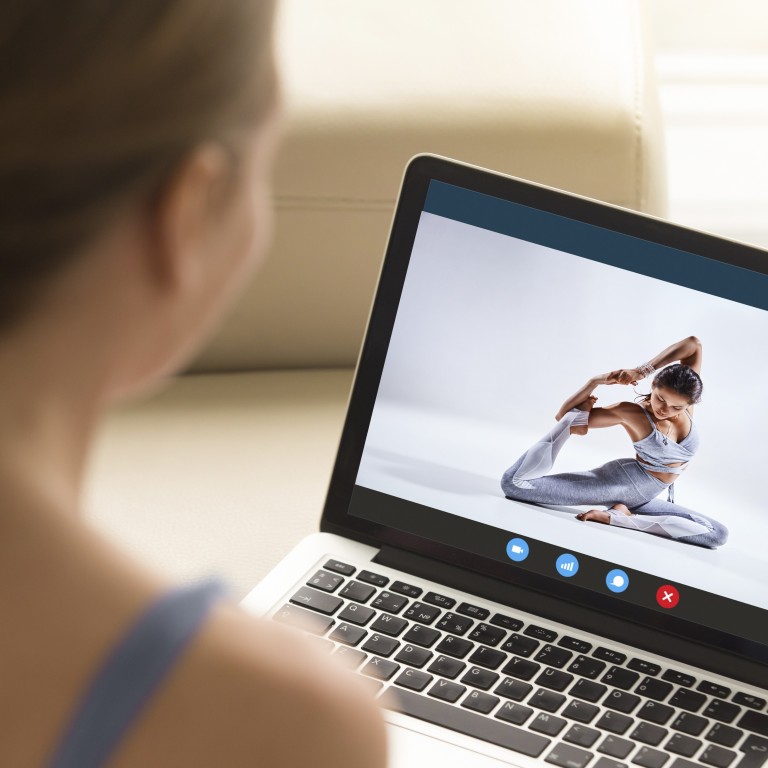
Online yoga classes: Facebook Live vs Instagram Live, Zoom issues, and which yoga types work best at home
- Virtual yoga takes some getting used to, Kevin Kwong discovers as he encounters technical glitches as an online yoga student and teacher
- To get the most out of the experience, create a space at home to lay out your yoga mat, light some candles, and place some mood-setting art
Virtual yoga classes are nothing new. California-based Glo, originally known as YogaGlo, has been hosting online sessions since 2008. They have never been more popular.
But how well do online yoga and meditation classes work? Having been on both sides of the camera, as a student and instructor, the answer depends on a range of factors, from the space you have to the style of yoga taught and the app used.
I took my first virtual yoga class with Hong Kong’s City Contemporary Dance Company at the onset of the pandemic in mid-February. I encountered a few glitches.

While popular among instructors for broadcasting classes live – Zoom’s multiscreen share feature allows all participants to appear simultaneously – for the students, its sound quality can be poor. If you have a handset with a 4.5-inch screen like mine, you may spend more time squinting at your phone than practising.

Luckily our teacher gave clear instructions and the sequence of poses was easy to follow. My initial misgivings were quickly dispelled.
As a student, I prefer taking classes on Facebook Live over Instagram Live because you can watch the former on a laptop or desktop (with a bigger screen), while the latter (until very recently) worked only on smaller mobile devices. There is also a one-hour time limit to each Instagram live cast. Both are subject to connection issues.

Given the array of classes on offer – from the more energetic core, Vinyasa and Ashtanga classes, to wheel yoga, Universal Yoga and sound meditation, to the more static relaxing stretching and Yin Yoga sessions – I was able to maintain my 12-year practice while working from home.
Some yoga types are more easily taught online than others. Universal Yoga, for instance, is a more advanced practice and may not be suitable for beginners, or those unfamiliar with the style. I found myself rolling off the yoga mat, completely out of alignment, in one of the sessions.
Yin Yoga, on the other hand, was more manageable because the class was made up of longer holds of no more than half a dozen static poses. The hour-long sound meditation was the only session I could not finish because the singing bowls sounded more jarring than soothing through my portable speaker.

On the whole, these online yoga classes are surprisingly effective – I sweated just as much in a virtual class as I did in a live one, and felt great afterwards. A good tip is to create your own space for the practice, by blocking off the living area or closing a bedroom door, adorning it with mood setting art or sculptures, and using candles or scented oils. That way you will feel more focused and less distracted, especially if you have pets or children running around.
I have taught yoga for five years, and I prefer being in the same physical space as my students, not only because I can keep an eye on everyone and gauge their energy but, most importantly, to allow me to take tiny breaks between poses. Demonstrating, talking and teaching for even 45 minutes without a breather can be daunting.
The past several months have proved that online yoga classes can offer a real alternative to studio practice. Local studios and instructors are attracting a growing audience as more people seek ways to alleviate stress. Students old and new may embrace the virtual practice for its convenience from the comfort of home even after the coronavirus pandemic and ensuing lockdowns end.

